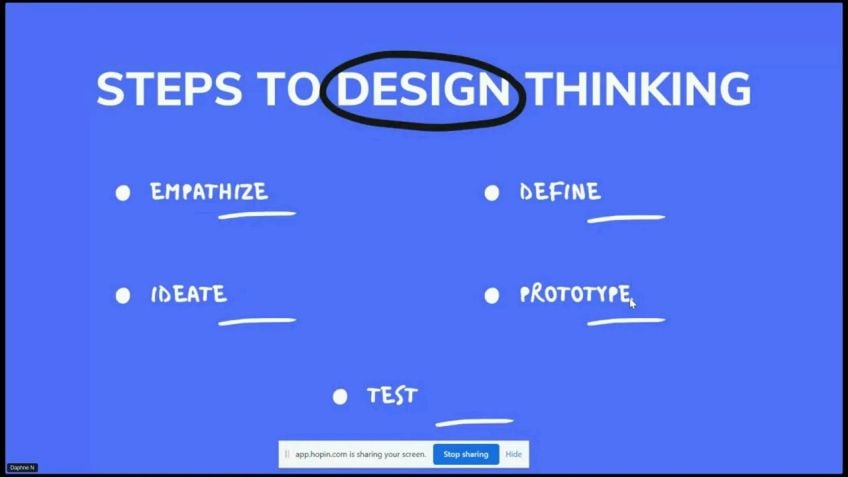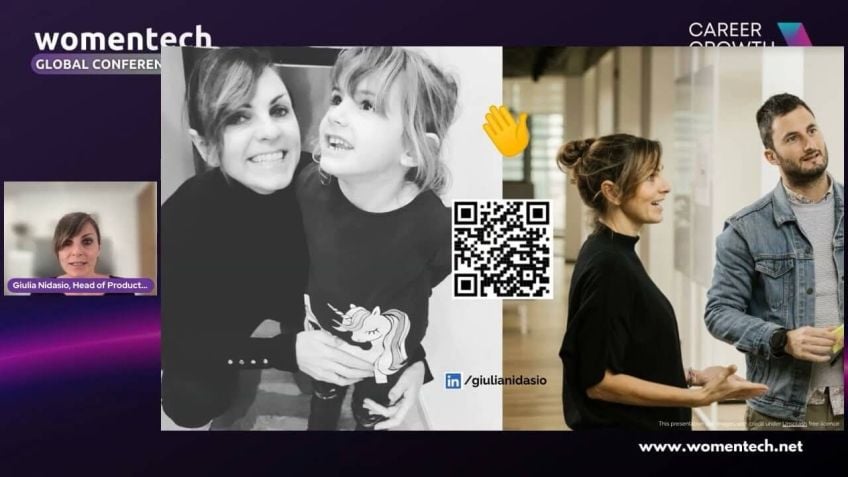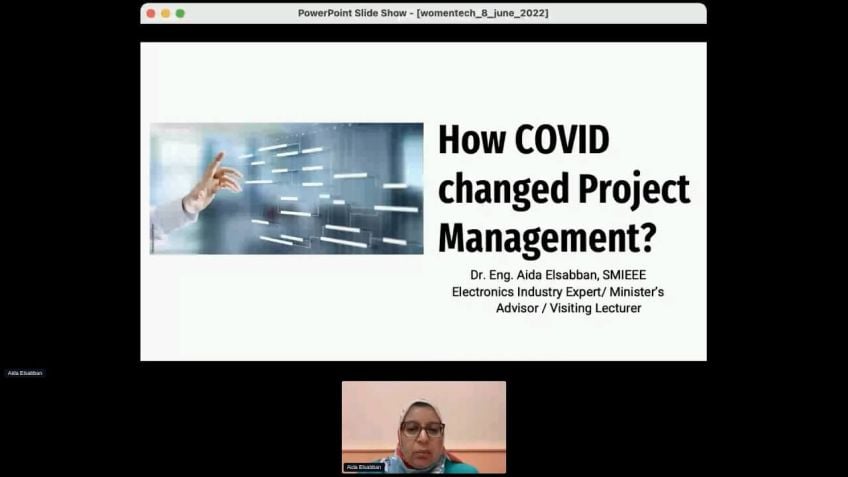It's All About the People: Resolving Agile Delivery Uncertainties Through People Interactions by Ruxandra Dariescu
Improving Tech Project Delivery: A Focus on People Interaction
Hello there. I'm Roxana Drici, a business agility coach, consultant, mentor, speaker, and author with over 25 years of experience in the tech industry. I'm delighted to share with you my insights on improving project delivery, an area I've come to be very passionate about.
Agile Teams: An Answer To Tech Project Failures
About 35% of projects in the tech world fail. In my work, I've detected common failure reasons, including disconnected individual objectives, executive failure in supporting people, talent gaps, and failed people collaboration. All these point conclusively to one key element - people interaction.
Why People Interaction Is Key
People interaction, which is facilitated by language, significantly impacts your ability to deliver on projects successfully. It's not that the technical skills don't count, they do. However, optimizing how your people work together can bring a massive improvement in your project delivery success rates.
Transforming The Language Of Project Delivery
I strongly propose that we focus on shifting the way we talk about project delivery. It's time we started focusing more on people - their contribution as individuals, rather than just capacity or resources. Rather than having predefined objectives, let's talk about adaptive people who collaborate to find solutions and effectively share information. I believe the current language of project delivery belongs in the past.
Language Is Key In Project Delivery
When we look at business operations from the standard, linear perspective, we objectify people and restrict their creative problem-solving capacities. However, if we see business from a more integrated, circular perspective, where people, operations, and business objectives are interconnected, we allow for more fluid, efficient project delivery. It all starts with the words we use.
The Power Of Purpose
To achieve this level of efficiency in project delivery, the focus should be on defining a common purpose. This purpose should answer the question, "Why are we doing this?" This alignment to a common purpose is the glue that binds us together towards a common objective despite uncertainty.
Emotive Attached To Language
Interaction within project teams usually revolves around specific keywords - keywords such as commitment, value, culture, strategy etc. Each person on the team usually has a different understanding of these terms informed by their individual experiences. This unique understanding of words by each team player contributes largely to the success or failure of how teams work together towards project delivery.
Improving People Interaction
Ultimately, if we want to bring down the high failure rates in project delivery, we have to reconsider how we engage people. We must ensure clarity of objectives, sync between plans and processes, and recognition of people's competencies rather than just considering them as resources.
We also have to start measuring the quality of people interactions. Remember, it's all about creating that sync, harmony or 'sweet spot' which allows a team to work smoothly towards project delivery. Achieve this, and you begin to turn project losses into wins.
Next Steps
You're welcome to connect with me for further insights on this topic. My latest book on Sustainable Project Deliverability for Agile Teams can also provide more detailed insights. It is available online at bookbond.com. Be sure also to contact me on Linkedin; I would love to share more ideas with you. Let's transform our project delivery strategies together!
Video Transcription
So I'm Roxana Dri ECU and I apologize for a slight delay in my presentation today. I'm a business agility coach, consultant, mentor, speaker and author. I have over 25 years of experience in the tech world, uh creating products, platforms, transforming organizations and coaching people.
And this is my passion. Um And as a result of my work in the tech world, um not long ago, I published a book about agile teams and their ability to deliver sustainable projects. Uh Why is this important? And why is this so close to my heart is because um about 35% of the projects in the tech world um are failing. And um I look for the reasons why they fail and some of the reasons I listed here about, you know, executive failure to support the people, disconnected individual objectives. We are agile. It's a talent gap, it's an individual competence, need failed people, collaboration. So all all these things have in common, the idea of people. So clearly, there must be something there around the people that impacts uh the ability to deliver and that is about people interaction as I found. So, and the people interaction is actually governed by the way we talk to each other and we talk through language. So it there is a deep need for us to refresh the language, the narratives, we tell ourselves about what makes up a project and how we can eliminate the uncertainty when we look at delivering um with a focus on the people.
Uh So for me, it's, it's very, it's a very clear statement. We need to redefine the language and reposition it for the purpose in an old world of project delivery. Um uh People are associated to capacity or resources and the focus is on objectives on budget scope timeline as we do a classical project plan that's not dismissed. But in my new world, the project is one dimension that deliver. It's a, it's a form of organizing a purpose and that is supported by processes that are appropriate for the scope of the project, not generic ones that are available in an organization, but specifically tailored to the scope of the project. And then it's a circular flow here between the project, the process and the people to actually meet the purpose. So the language you learned about project delivery belongs in the past. I strongly believe that and it's about um focusing on input as a project objective, focusing on budget as a cost, uh focusing on capacity rather than uh people where we put their FTEs we do, we have predefined work. Um We ho ho information, a timeline talks about fixed time frames in a world that talks about agility and agile. Um And we look at risk management focusing on a budget or capacity or scope and the objective there is to have a shareholder profit or value association.
Now, this is a linear flow of information from the business to its operations and to its capacity. What I am stating is that all these information flows are connecting people through the language they use to uh create a project and language is made of words. Now, it's a cultural construct. When you look at the words and every word or combination of words we use carries with it an individual experience, it's very personal. Um uh We, we pick up words in a linear way and that's how we make sentencing and how you understand me today. And we look at the word itself as the beginning of the experience, not the end of it. But what's the most important thing is that no word in any language spoken on this planet has a power on its own. We assign the power to words. So we, we if we reframe the structure of how we look at the language we use in project delivery, we look at customer needs and purpose to create value. We look at the project purpose that drive the commitment for an output. We look at what creates the people value for competence through the roles that are just a temporary identity part of that specific project. Uh We, we should look at the people being adaptive learners. We should look at collaborating for solutions and transparently sharing information.
We look at the processes for their operational efficiencies, not as blockers or stoppers of our um flow of of working together. And from those processes, we derive the risk management. One of the risks being the people risk, we create value to market, not time to market nothing.
We create value to market and we have a bunch of stakeholders for which we deliver value us as people working in a team to deliver for our interaction. We are actually a stakeholder group that creates value while one of the stakeholders is the shareholder who takes the profit.
Now, if we are uh looking at um the words we use there is it's important to remember that words have flavors and those flavors can be elevating and positive or could be deprecating and negative. If I take a very simple example of the daily uh stand up meetings that we are running in under agile methodologies, we can use positive words. I completed my task or we could use negative words like I feel under control all the time. We can use elevating words like I learned to run demos or deprecating words like I wasted my time in this daily stand up meeting. So if words have flavors, then I think it's important to understand that those flavor are giving the power to the words they and that power can really push us into breakdowns or into breakthroughs. Now, how are the words unfolding when people interact? It's very simple. Every single word we use actually carries the power of the moment. We have learned the word, we have a definition part of our specialization. The same word can mean different things in different industries is the context in which we use learned or apply the word, the emotions associated with that the environment and the culture.
So these are the the way we are looking at the words representing a complete combination and we usually just ref refer it or express it through 11 single statement. Now, I would like to take the word commitment of one person and go through uh a little example of how we think about commitment when we interact to deliver something together and how we feel about commitment. When we interact to deliver something together. It is a very simple story. The thinking thing is very, very, very, very simple. It's the logical part of our mind that is linear and believes it has the answers to everything. Now, how we feel about the word commitment is a slightly different story because that feeling we use the word commitment, it's really dependent on that specific moment of that specific interaction. Not yesterday, not last year, not next month, not in an hour's time. It is in that moment.
And that is an entangled network of emotions. The interesting thing about our emotions is that we describe them through the words we refer to as feelings and only in the English language, there are over 3000 words that are describing feelings. So you can see when we look at the word as simple as commitment in a linear way, we believe it's logical and we can go to the dictionary and take up a definition of um an association of words and we think that it is but how we feel about it, it's a different story now put in context of a feeling what's happening in a team interaction.
So each one of the dimensions here I was trying to represent for the green light, it's one person and their feeling about the word commitment, make a team of 20 people, make a team of five people or, or a team of two. You may end up with straight lines or you may end up with a network of lines around the world commitment that express how we feel in that specific moment. Now, the words we use to talk about our individual narrative, the story of how we understand the commitment generates an interaction efficiency niche. If we manage to get in sync, we are efficient interacting outside the niche adds levels of uncertainty in people interactions.
And there is a beautiful study by a university in Japan that actually identified that people focused on purpose at the same time in the same moment, create brain coherence. So they work well together to deliver. But for that to happen, we have to flip the question from what is the delivery plan to what is the delivery purpose? Remember when I said, we look at the linear flow in business um from a business structure to operation and this resources. Now I wanna flip that to say we actually look at business, we look at people and operations in a circular way because each one impact each other and the moment it's impacted, it creates a recursive process there and for people to connect through purpose, for any project delivery.
Despite uncertainty, people have to come together to discover their sweet spot in incoming accord come together and have a pulse together. A project team. It's only a unity of purpose, value, culture, strategy, objectives, processes, methodologies, tools, the role in that specific moment, the competence and mindset that is glued together in a circular way to create a pulse of the team that interacts together. When that rhythm is established, you have a fluid delivery. When you are outside that rhythm, you don't have a pulse, you have a heart attack. So um that that uh is is disturbing for the people who try to commit together to something to bring the competence to communicate, to organize, to help build relationships and pull together the determination to deliver together. So this is this is the story of how words are critical to the way people interact and that criticality brings or removes uncertainty when we deliver together. And if it's anything I would like you to take away today from this story is that we can only work together when we are aligned with a common purpose. Objectives are ways of measuring how far or how far, how close we are to that purpose.
But the purpose itself answered the question, why we are doing that? And if we cannot agree, why we are doing that as a team is very difficult to deliver without creating levels of uncertainty. Now, we need to have clarity of objectives as well as meaningful objectives is no point in having objectives that are um designed for a year. But we actually work in two weeks prints. Now there is also critical to ensure the sync between the plan and the process. Generic processes do not support a plan to deliver. It's also important to acknowledge people. Competence is not a resource is not the capacity, it's a competence and we are in the services industry in tech. Therefore, our competence is packed in our heads. We cannot accelerate our heads, we cannot uh create more heads to, to do that. We have one competence that applies to that specific moment. We need to acknowledge that and to acknowledge also that people are the value, not the resource, not the capacity when we uh realize that.
And we all realize it at the same time, we are removing levels of uncertainty for the ability to work together. And all those 35% of losses will convert themselves in wins. But we need to start measuring the quality of people interactions. So be smart, choose smart and play well together. I'm Roxana Dario and I would like to thank you for taking this journey with me. I will um suggest that if you have time to browse go on book bond.com, which is the library where my book on sustainable Project Deliverability for Agile teams is published. Um I will look to switch off my sharing so I can actually see the um a chat. Uh And if there are any questions, I open the floor to that. Are there any questions? Thank you. I appreciate um How, how can you start measuring people interactions where there are many ways you can create your own models or you can um look me up. I I can uh take you through the journey of measuring that. It's very simple. It does create a pulse of the team in a very specific way of looking at that and measures the ability to deliver together measures the competence level measures communication in a fully transparent way for the teams to look at that.
Um uh Tuna, would you mind dropping me a line on linkedin? I can share with you the study devops and Agile are two different things agile. It's a methodology. It's a way of thinking that puts in, puts yourself in a structure DEV ops is a function. I guess we are gonna gonna get cut off in a moment because my time is up for this session and I really appreciate you being with me. I'm sorry about the delay in starting it and I look forward to seeing you on uh next journeys. Um Please connect with me on linkedin my um ID. There is um Rox Sandra D. Um I'll, I'll drop a line here also to everyone to, to go there um to connect with me um with the, with the linkedin uh uh link itself. Thank you so much.





